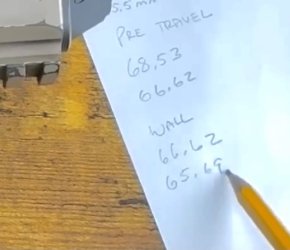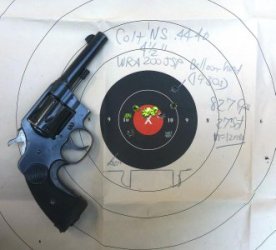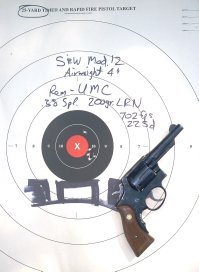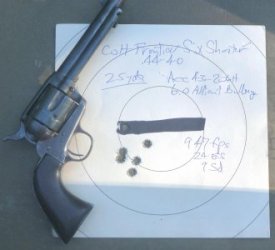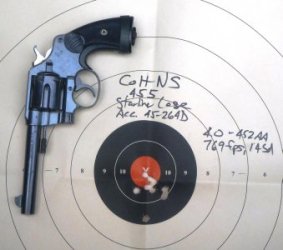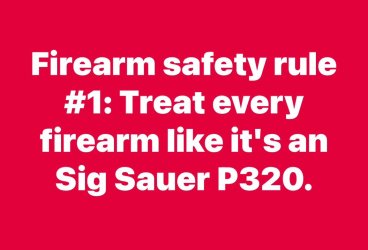Good morning, everyone. It's an interesting discussion and I appreciate everyone's comments.
I've been thinking about the video with the guy with the wood screw who points out the play/slop between slide and frame, and shows how the P320 can discharge when the slide is manipulated while the trigger is held motionless by the wood screw just beyond the wall.
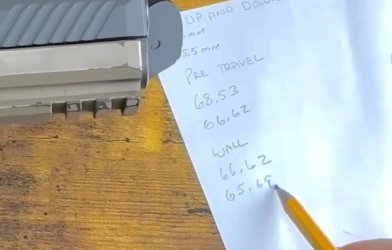
Two thoughts on this occurred to me overnight:
• I don't think this explains how in a very few cases — including the recent USAF tragedy — P320s with manual safeties, M17s and M18s, have had reported uncommanded discharges. The manual safety, when engaged, holds the trigger well back from the wall.
• Typically shooters praise a crisp trigger. "Breaks like a glass rod" being the highest praise. In this case, as shown in the wood screw video, the trigger is held by the screw just beyond the wall. At that point, slide manipulation, bumps to the slide, will discharge the weapon.
While one would never want anything other than finger pressure on the trigger to actuate firing, if one had, say, a 1911 held a tiny fraction of a mm beyond the wall by a trigger finger, and the slide was bumped, I think the gun would be likely to discharge, not because of the slide manipulation but because of the sensitivity of the finger and trigger mechanism to contact at that extremely delicate point.
Reflecting on the above, I've been wondering how far beyond the wall triggers can typically be held before they actuate a discharge.
----
Re the cerakoted frame question above, I don't think that would have anything to do with it as that would not affect the up and down movement between frame and slide.
I've been thinking about the video with the guy with the wood screw who points out the play/slop between slide and frame, and shows how the P320 can discharge when the slide is manipulated while the trigger is held motionless by the wood screw just beyond the wall.

Two thoughts on this occurred to me overnight:
• I don't think this explains how in a very few cases — including the recent USAF tragedy — P320s with manual safeties, M17s and M18s, have had reported uncommanded discharges. The manual safety, when engaged, holds the trigger well back from the wall.
• Typically shooters praise a crisp trigger. "Breaks like a glass rod" being the highest praise. In this case, as shown in the wood screw video, the trigger is held by the screw just beyond the wall. At that point, slide manipulation, bumps to the slide, will discharge the weapon.
While one would never want anything other than finger pressure on the trigger to actuate firing, if one had, say, a 1911 held a tiny fraction of a mm beyond the wall by a trigger finger, and the slide was bumped, I think the gun would be likely to discharge, not because of the slide manipulation but because of the sensitivity of the finger and trigger mechanism to contact at that extremely delicate point.
Reflecting on the above, I've been wondering how far beyond the wall triggers can typically be held before they actuate a discharge.
----
Re the cerakoted frame question above, I don't think that would have anything to do with it as that would not affect the up and down movement between frame and slide.

